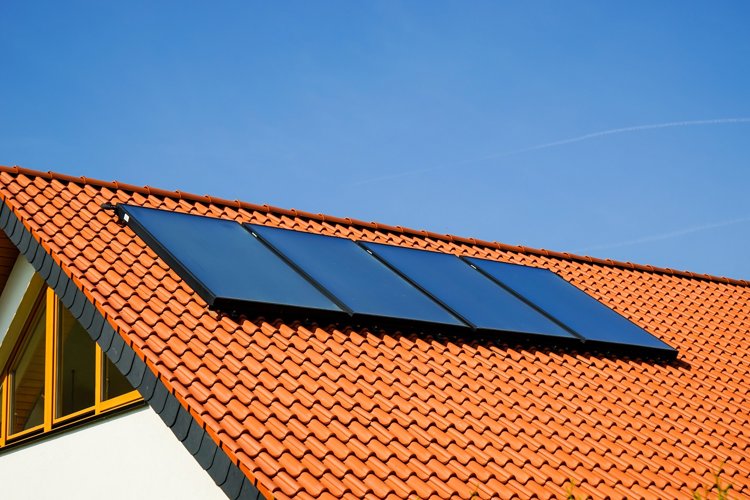Central heating systems designed today are often more than just about the primary heat source. The range of complementary heating technologies which are now available provides homeowners with an exciting opportunity to go even greener. Here, we take at look at how increasing overall system efficiencies by combining technologies can be as easy as 1, 2, 3!
The heating market today offers a selection of products which are significantly more efficient than their predecessors. What’s more, the efficiencies of these products can be further improved when they are partnered with complementary technologies. This can be as simple as installing a quality controls system (we cover this in more depth in a couple of our other blogs) or it can be much more comprehensive by combining heat sources to help the overall heating system operate at its most efficient operation. Let us take a deeper look into how you could maximise the benefits when upgrading your heating system.
Step 1… consider a hybrid
The starting point for any new heating system is the heat source itself and the nature of the project will determine the type of heat source you choose. For example, if your home heating is currently fuelled by a fossil fuel boiler and it needs replacing, you could consider the hybrid route which brings together the best of both worlds. One hybrid combination is an oil boiler with an air source heat pump, such as the Grant VortexAir. In distress purchase situations, the oil boiler can be installed straightaway to quickly restore heat and then the heat pump can follow once the necessary adjustments have been made to the rest of the system.
The Grant VortexAir operates using four modes (oil boiler operation, heat pump operation or operations when both units work), automatically switching to the mode that most effectively meets the heating demand. When temperatures are colder, the oil boiler can fire up and meet the shortfall of heat demand when required. At all other times, the heat pump will be operating to fulfil all or as much of the heat demand as possible. A hybrid, therefore, exemplifies how two heat sources can be brought together to work in tandem, efficiently and effectively.
An alternative Step 1… Go completely green
If you are embarking on a new build or renovation project, you may opt for a totally renewable heating system like an air source heat pump. Heat pumps lend themselves very favorably to properties where floor and wall insulation levels are high and when other parts of the system can be upgraded too, such as the radiators and pipework. Grant’s Aerona³ R32 models achieve excellent efficiencies in their own right (plus they are also eligible for the Boiler Upgrade Scheme so you could benefit not only from a lower carbon footprint and reduced energy bills but you could also receive financial payments too). However, when combined with other technologies, a heat pump can achieve its ultimate potential so let’s discover more…
Step 2… Select complementary technologies
Selecting the right supporting technologies is almost as important as choosing the most suitable heat source itself. By installing a solar thermal system and high efficiency cylinder alongside a heat pump, the overall heating system can work more efficiently. Solar thermal can deliver a significant proportion of your home’s hot water (even on cloudy days) which can help reduce the demand on the heat pump.
Installing a suitable twin coil cylinder will also help by effectively extracting and storing the heat produced by both the heat pump and a solar thermal system. Grant's QR Hot Water Cylinders have been specifically designed to work alongside Aerona³ heat pumps, with a larger primary coil and excellent insultation which combine to deliver maximum heat transfer and recovery as well as reducing heat loss. Essentially, by choosing the right cylinder, you can help reduce the workload on your heat pump and, when you add in solar thermal, the results can be even better.
Step 3… Choose appropriate heat emitters
You’ve chosen your primary heat source; you’ve decided upon installing solar thermal and a new high efficiency cylinder; the final part of the jigsaw which needs completing are the heat emitters. Heat emitters are tasked with the role of transferring the heat from the system into the living space that you occupy, relax and live within. The overall efficiency of your home heating system is dependent on the heat emitter(s) selected for your property – the high efficiencies of the heat source can be undermined if the wrong type and size of emitters are selected.
With low temperature systems, such as heat pumps, it is crucial to install heat emitters with sufficient surface areas to transfer the heat. This is one of the reasons why underfloor heating is often installed alongside a heat pump. An underfloor heating system allows the whole floor to become a surface area for heat transfer, evenly radiating the warmth upwards into the occupied living spaces within your home. When set correctly, underfloor heating can achieve and maintain desired room temperatures allowing the heat pump to operate at its best, in an even, balanced cycle.
There you have it - maximising the efficiency of your heating system can be achieved in more ways than one but three elements remain at the core of any good heating package and here at Grant, we can deliver them all.
Discover more about Grant's product ranges by clicking here.

